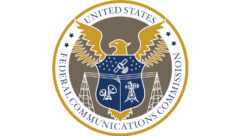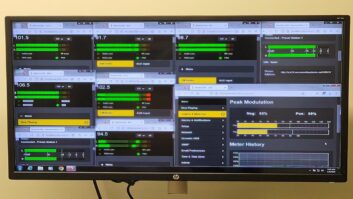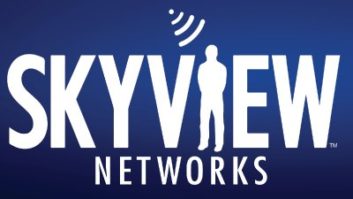I cannot think of one piece of equipment used at a radio station that hasn’t been affected by the ubiquitous nature of IP communications — except, perhaps, the coffee pot. Remote controls are no exception; and in fact, the case could certainly be made that remote controls have been made far more useful because of IP connectivity.
There are about a half-dozen companies offering remote controls, but in this particular article, we’re going to focus on remote control products that can be configured to operate within a network operations center system.
Simpler remote controls are also important, of course; take a look at an older review of Broadcast Tools, Circuitwerkes and Sine Systems in this article: www.radiomagonline.com/misc/0082/remote-site-control/33631.
NETWORK OPERATIONS CENTER
The NOC is a centralized location, usually manned on a 24-hours-per-day basis, in which parameters and alarms are collected from remote sites, by way of IP-based communications.

caption: Audemat features a dashboard-style user interface for iHeartMedia’s New York City cluster, using Masterview.
NOC personnel would typically have all the remote access credentials needed to browse in to devices at the far end; however, when you consider that dozens or even hundreds of stations are being monitored, it becomes clear that the monitoring functions must themselves be automated. Use of Simple Network Management Protocol is an industry-standard technique for doing so; site alarms can be collected via SNMP traps from the remote end or via “polling” from the near end, usually by way of SNMP.
In the context of radio broadcasting, analog parameters would include:
– Transmitter power output
– Transmitter room temperature
– Outside temperature
Alarms would typically include:
– Over-the-air silence
– Loss of PPM encoding
– Summary alarms from a transmitter
– Fire alarm and unauthorized access alarms
These are the most basic types of information collected and are essentially the same things that engineers have needed to know about since remote controls came in to common use. Modern transmitters, modern STL receivers, AoIP codecs and even some air conditioning systems (ones usually meant for NOC applications) make innumerable parameters accessible to the end user, and the engineers that configure the NOC systems make the choices about which parameters they want.
The remote controls we’re discussing in this particular article can all be scripted to take action on their own, whether it is to simply change STLs or to change transmitters or even transmitter sites, as the situation warrants.
Nevertheless, NOC personnel will be alerted to the fact that something happened at the far end. The NOC would either alert local engineers regarding a problem, or perhaps would mobilize members of an engineering team that support transmitter sites over a wide area. Major tower owners and cellular telephone carriers use the same methodology; it’s commonplace in those businesses. I know of at least two major broadcast organizations that use the NOC concept, and I’m sure there are many others.
This methodology has finally found its way in to radio broadcast organizations for the following reasons:
–Transmitter reliability. Solid-state transmitters don-t require as much maintenance as vacuum-tube transmitters historically did. Many also support remote access.
– IP connectivity to sites. It’s far easier to keep track of remote sites by IP than it was in the days of simple telephone communications, or four-wire data circuits before that. Plus, much of the configuration, operation and troubleshooting of systems is done remotely.
– Fewer personnel. Taking the first two points into consideration, it’s clear that fewer people can be responsible for more remote sites.
DEVELOP YOUR OWN MINI NOC
Perhaps at this point you are thinking “Well that’s all fine for the big boys, but I’m a one-man/woman band. This concept is of no use to me.” To that I would reply: Have an open mind to new technologies — you can apply the same ideas to your own group of radio stations, thus providing better service while making your own life easier. Whereas group owners might be monitoring dozens or hundreds of stations, you can take a similar approach to your own group, no matter its size.

caption: Here’s the Burk Auto Pilot user interface for KOST(FM) in Los Angeles.
Let’s take a look at your equipment choices for the implementation of a mini NOC (or a full-size one, for that matter).
Burk Technology is a long-time manufacturer of remote controls for broadcasters. Their flagship product is ARC Plus Touch, although they offer the ARC Solo and ARC Plus SL, as well. Some of the ARC Plus Touch’s basic features are as follows:
– It’s an IP-based system
– Designed for scalability, supporting up to 256 metering and status channels, 256 relay pairs and 512 virtual channels
– Multiple sites can be connected together via IP, providing the basis for NOC systems
– Operator access can be gained through front-panel touch screen; a PC; or via IP, on a PC, smartphone or tablet. Telephone access can be gotten through the optional Recordable Speech Interface.
– Email alerts and alarm reporting
– Uses a distributed input/output architecture; input and output panels “talk” to the main unit via IP. This allows for placement of the i/o devices where needed (as opposed to the legacy IP-8 panels, which needed to be close to the ARC-16).
– Plus-X IIU is the single-RU device for metering and status. It has 16 status channels plus 16 channels that can be either metering or status
– Plus-X ICRU provides eight pairs of relay outputs, configurable as momentary or latching
– Plus-X 600 is a combination unit, providing 16 status inputs, eight metering inputs and 12 relay outputs
– The Plus-X 300, also a combination unit, provides eight metering or status inputs and eight relay outputs
Burk’s PlusConnect is a single-RU device that provides a simple means by which a transmitter can be connected to the remote control system, with use of a single Ethernet cable. Communication between the remote control and the transmitter is carried out via SNMP and includes all control and metering. Burk has interfaces for GatesAir Z and ZX series transmitters, as well as the 3DX, the HPX-series and the Flexiva series. In addition, Burk has PlusConnect for Nautel’s V, VS, NV, NVLT, GV, XR and has recently added the NX-series as well.

AutoPilot is the software that allows for the monitor and control of multiple remote sites from a single PC. It facilitates the development of custom user-interfaces, and gives the end-user the ability to manage alarms and logging. And importantly, for the NOC application, it allows for automation of the sequences of events, defined by the end-user, that execute changes at the far end, such as the switchover to a backup transmitter, or antenna or STL system.
Jet Active Flowcharts are a software tool that allows for the control sequences to be designed with simple flowcharts.
Worldcast Systems- Audemat Control Modular (formerly known as IP2Choice) is a system for site management and monitoring. In its more familiar role as a remote control, it can be configured to connect with any equipment at a site through traditional status and metering inputs and commands (relays).
Additionally, the Audemat Control Modular is capable of advanced connections to other equipment using serial protocols or via SNMP on an IP network. All units connected to the Audemat Control Modular can thereafter be monitored and controlled locally and remotely.
Audemat Control Modular can be configured with up to 12 modules. The module combinations could include as many as five analog metering boards (40 inputs total); eight digital input cards (128 inputs total); eight command relays boards (64 relays total); one audio card with two inputs; and three RS232-port boards with three ports per board.
As the “brains” in a mini-NOC system, the Audemat Control Modular can also take action locally, based on scripts created in Audemat’s Scripteasy graphical facility control software. Scripteasy makes use of logic inputs, thresholds on analog inputs, logic gates (OR, NOR, AND), timers and clocks, configured by the end-user. The main function of scripts such as these is to engage backup and alternate systems, and to send alarms to the radio station personnel, letting them know something has happened, and action was taken when warranted.
Another important aspect of the Audemat Control Modular is that it acts as both an SNMP agent and an SNMP manager, meaning that two units can literally “talk” to one another across an IP link, allowing site-to-site control as well. A typical application would be the automated use of a backup transmitter site.
Masterview is the application that allows remote uses to display data and control equipment in multiple custom views (also created by the end-user). Each view can contain as much information from the remote site as desired. MasterView is now available as a Web application; views are created using a standard Web browser and viewed from any PC or mobile device.
Davicom offers a line of remote controls: the DV-Micro, the DV-Mini, the DV-208 and the DV-216. Looking at the DV-216 in detail, we see it includes 16 metering inputs, 32 status inputs and 32 SPDT relay outputs. All of the input/output connectors are on the rear panel of this 2-RU device; so a “build-out” to accommodate connections to external equipment would, for all practical purposes, be necessary. Some of its other salient features are as follows:
– Differential input, analog metering ranges of +/- 2.5 V, +/- 10 V and +/- 20 V
– Audio detection available on metering inputs
– 10 audio monitors available over dial-up, and 10 available via streaming over IP
– Two Ethernet ports
– SNMP agent functionality built-in
– SNMP manager functionality built-in (up to 96 SETS, 96 GETS and 96 traps)
The DV-series of remote controls has built-in virtual logic gates that provide the user with decision-making features and commands for such actions as antenna pattern changes, program chain switching, backup transmitter switchover, generator exercising and many other things limited only by your imagination and circumstances. As you would expect, you can interrogate the unit by remote access, using a PC running the DavLink software, with a Web browser or SNMP manager, or by telephone to check signals and status, monitor live audio feeds and execute commands.
For your mini NOC, Davicom offers DavNet, a Windows-based software application that runs on a single computer and communicates with DV-type remote controls at the remote sites via IP or dial-up. DavNet manages the way you make use of remote alarms; it also continually measures network integrity by communicating at fixed intervals with DV units in the field, thus confirming their correct operation.
At the heart of DavNet is a Microsoft Access database, which supports the following features:
– View Reading allows you to view the full alarm message including levels and status of all inputs / outputs
– Site Schematics can display equipment layouts and schematics to obtain a dynamic functional block overview of any particular site. Schematics can be imported as DFX files from a CAD system and stored in the database
– Site Memo allows users to make personal notes related to a specific site that can provide an information flow between different duty personnel. In addition, the user can open a Site Information file for each location which can store details such as station ID, frequencies, contact numbers, equipment model and serial numbers, etc.
Once alarms are acknowledged, they can be archived in the database, where they can later be accessed and exported, and reports can be created with an automatic report generator.
Suitelife Systems offers Axess, which is a software and a suite of products meant to facilitate the automation of operations (such as in a NOC) used to monitor and control devices across a widespread network.
Axess provides rules-based filtering to identify problems as they occur and helps to resolve them in a timely manner. Additionally, it provides analytic information for trend analysis in order to prevent system downtime. Logical, visual overlays were developed for Axess so that NOC operators have visual references for signal flow at multiple, widespread equipment locations.
The days of each radio station having its own jocks or board-ops manning the controls 24/7/365 are largely ancient history. The day your station was automated during overnights and on weekends was the day you needed a better remote control; and as the number of stations increased, the need for scripting and remote access did as well.
I hope some of these ideas spark your imagination. It is possible to make your life as a broadcast engineer at least a little bit easier.












